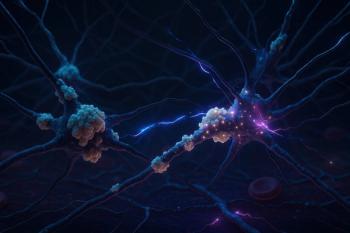
- Vol 31 No 4
- Volume 31
- Issue 4
Nuances, Narratives, and the “Chemical Imbalance” Debate
It is time for psychiatry’s critics to drop the conspiratorial narrative of the “chemical imbalance” and acknowledge psychiatry’s efforts at integrating biological and psychosocial insights.
[[{"type":"media","view_mode":"media_crop","fid":"23945","attributes":{"alt":"Chemical Imbalance Debate","class":"media-image media-image-right","id":"media_crop_1045900818647","media_crop_h":"0","media_crop_image_style":"-1","media_crop_instance":"2004","media_crop_rotate":"0","media_crop_scale_h":"0","media_crop_scale_w":"0","media_crop_w":"0","media_crop_x":"0","media_crop_y":"0","style":"width: 226px; height: 135px; float: right; margin: 2px 4px;","title":" ","typeof":"foaf:Image"}}]]Religions, cultures, and political groups all have their narratives-usually favorable or flattering accounts of their origins and beliefs. But narratives are not the same as truths, and usually lack the nuances of truth, which is rarely black or white. To see how this applies to psychiatry, try answering the question: Which one of the following statements best characterizes the American Psychiatric Association’s 2005 position on the causes of mental illness?
1. All mental illness is caused by specific and identifiable chemical imbalances in the brain.
2. The most serious mental illnesses, such as schizophrenia and major depression, are caused by specific chemical imbalances.
3. Chemical imbalances of some sort cause some mental illnesses.
4. The exact causes of mental disorders are unknown.
Now, if you were to give credence to a recent online polemic posing as
However, if you had actually investigated the APA’s 2005 statement, you would have chosen answer 4. Here is the complete passage from the
The exact causes of mental disorders are unknown
, but an explosive growth of research has brought us closer to the answers. We can say that certain inherited dispositions interact with triggering environmental factors. Poverty and stress are well-known to be bad for your health-this is true for mental health and physical health. In fact, the distinction between “mental” illness and “physical” illness can be misleading. Like physical illnesses, mental disorders can have a biological nature. Many physical illnesses can also have a strong emotional component [italics added].
2
In fact, in the same year as the APA statement, Drs Thomas Insel and Remi Quirion3 wrote a seminal paper proposing that “mental disorders need to be addressed as disorders of distributed brain systems with symptoms forged by developmental and social experiences.” They went on to consider how “environmental factors during critical intervals of development exert long-term effects on gene expression” and suggest that “studying unconscious processes, motivation, or defenses, while at one time the sole province of psychoanalytic therapies, are now also in the domain of cognitive neuroscience.”
Does this sound like a simplistic chemical imbalance hypothesis? I don’t think so. But then, why do antipsychiatry groups and bloggers fail to note the nuances of what psychiatrists have been saying for at least the past decade? My guess is that doing so would undermine the derogatory narrative they wish to promote. And, of course, nuanced statements do not gin up public opinion or sell books.
OK-but weren’t there many psychiatrists in the 1980s and 1990s who advocated a purely biochemical theory of mental illness, often using the metaphor of the chemical imbalance to explain mental disorders to their patients? It’s difficult to answer this question, except in an anecdotal way, but it’s probably true that some psychiatrists did hold a purely biocentric view. And, alas, some undoubtedly used the expression “chemical imbalance” in their clinical practice, without putting it into a broader context for their patients.
It’s also true, as critics of the chemical imbalance hypothesis point out, that the term “imbalance” is misleading. To validate an imbalance, we must first have a quantitative understanding of the optimal neurochemical balance in the brain-and, given the scores of neurotransmitters now identified, this balance has yet to be ascertained. That said, I am not aware of any concerted effort by academic psychiatrists, psychiatric textbooks, or official psychiatric organizations to promote a simplistic chemical imbalance hypothesis of mental illness. That is what I meant when, in a
But still-shouldn’t psychiatrists in positions of influence have made greater efforts to knock down the chemical imbalance hypothesis, and to present a more sophisticated understanding of mental illness to the general public? Probably so. But there were sincere attempts to do just that, by a number of prominent psychiatrists-beginning nearly 50 years ago, with the developers of the catecholamine hypothesis. As psychiatrist Joseph Schildkraut and neuroscientist Seymour Kety wrote in 1967:
Whereas specific genetic factors may be of importance in the etiology of some, and possibly all, depressions, it is equally conceivable that early experiences of the infant or child may cause enduring biochemical changes, and that these may predispose some individuals to depressions in adulthood. It is not likely that changes in the metabolism of the biogenic amines alone will account for the complex phenomena of normal or pathological affect.
5
Note the nuanced view of causality in this formulation-allowing for the possibility that chemical changes in the brain are effects of early experience, but also predisposing factors in some subsequent depressive episodes. Note that Schildkraut and Kety did not argue that chemical imbalances per se cause depression.
Psychiatry’s critics also conveniently omit reference to what was arguably the most prevalent paradigm in academic psychiatry, during the 1980s and beyond-the biopsychosocial model of Dr George Engel.6 Now, the biopsychosocial model has been subjected to much criticism, and some would argue that few psychiatrists nowadays employ the
These are worrisome observations. But one thing is beyond dispute: the biopsychosocial model can hardly be reduced to a chemical imbalance theory of mental illness. As far back as 1991, in my book on psychotherapy for the general public, I wrote: “In recent years, the ‘biopsychosocial’ model of mental illness has gained prominence. This holds that mental problems have biological, psychological, and social roots. Therapy may therefore involve treatment in all three spheres.”10
I was far from the only psychiatrist to promote the biopsychosocial model-and none of my academic colleagues, to my knowledge, publicly endorsed a simplistic chemical imbalance model as a blanket explanation for all mental illness. Indeed, over 20 years ago, the late Dr Theodore Nadelson-one of my teachers and a highly respected psychiatrist-wrote in his foreword to my
Neuronal tissue grows in response to its environment at least as much as it is obedient to any lockstep process choreographed immutably the “gene machine.” We are creatures in nature, but we create our own nature. . . . If we are to understand patients and, as doctors, to help them, we require the broadest base. . . . [In addition to biological research] we should also pursue greater understanding of the psychological and social environment. That task is further informed by literature-poetry, philosophy, theater. That is our “biology” also.
11
Ted Nadelson understood that the brain is the crucible in which all the elements of human life intermingle-including our genetic makeup; our brain chemistry; and the influences of parents, culture, ethnicity, and even diet. Derangements, deficiencies, or abnormalities in any of these biopsychosocial elements can lead to what we call, for lack of a better term, mental illness-which often represents the end result of innumerable interacting pathogens. Thus, in the introduction to my
The Nobel Prize–winning psychiatrist and neuroscientist, Dr Eric Kandel, observed that “all mental processes, even the most complex psychological processes, derive from operations of the brain . . . as a corollary, behavioral disorders that characterize psychiatric illness are disturbances of brain function, even in those cases where the causes of the disturbances are clearly environmental in origin.”12(p39) But in practice, Kandel is no biological reductionist. He is certainly no fan of a chemical imbalance hypothesis! Rather, Kandel paints a picture of the “new” psychiatry, in which psychoanalytic and biological constructs complement and reinforce one another. It is time for psychiatry’s critics to drop the conspiratorial narrative of the chemical imbalance and acknowledge psychiatry’s efforts at integrating biological and psychosocial insights.
This article was originally posted online on 3/11/2014 and parts of it may have been updated.
References:
1. Levine BE.
2.
3. Insel TR, Quirion R. Psychiatry as a clinical neuroscience discipline. JAMA. 2005; 294:2221-2224.
4. Pies R.
5. Schildkraut JJ, Kety SS. Biogenic amines and emotion. Science. 1967; 156:21-37.
6. Engel GL. The need for a new medical model: a challenge for biomedicine. Science. 1977;196:129-136.
7. Kontos N. Perspective: biomedicine-menace or straw man? Reexamining the biopsychosocial argument. Acad Med. 2011;86:509-515.
8. Ghaemi SN.
9. Gabbard GO, Kay J. The fate of integrated treatment: whatever happened to the biopsychosocial psychiatrist? Am J Psychiatry. 2001;158:1956-1963.
10. Pies R. Psychotherapy Today: A Consumer’s Guide to Choosing the Right Therapist. Manning, Skidmore, Roth, 1991.
11. Nadelson T. In, Pies R: Clinical Manual of Psychiatric Diagnosis and Treatment: A Biopsychosocial Approach. Arlington, Va: American Psychiatric Press; 1994.
12. Kandel ER. Psychiatry, Psychoanalysis and the New Biology of Mind. American Psychiatric Publishing, Washington DC, 2005.
Articles in this issue
over 11 years ago
Tips for Conducting Disability Evaluationsover 11 years ago
Pain, Opioids, and Psychiatristsover 11 years ago
Ketamine Anesthesia for Electroconvulsive Therapyover 11 years ago
Chronic Traumatic Encephalopathy: Should We Be Worried?over 11 years ago
Epilepsy and Seizures: Neuropsychiatric Implicationsover 11 years ago
Management of Psychosis in Parkinson Diseaseover 11 years ago
Computerized Neurocognitive Tests in Clinical Practiceover 11 years ago
What Is the Role of Vitamin D in Depression?over 11 years ago
Clinical Assessment of Dysexecutive SyndromesNewsletter
Receive trusted psychiatric news, expert analysis, and clinical insights — subscribe today to support your practice and your patients.














